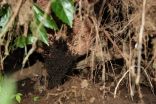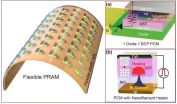New mechanism that attacks viral infections discovered
German researchers find evidence of the interaction between 2 components of the innate immune system to combat rotavirus infection; publication in Nature Immunology
2015-06-15
(Press-News.org) This news release is available in German.
An innovative mechanism that the innate immune system uses to control viral infections has been uncovered by researchers at the University Medical Centers in Mainz and Freiburg. Central to this is the discovery that two different but related elements of the immune system can act together in concert to fight, for example, rotavirus infections. Infection with rotavirus is the most common cause of diarrhea in children around the world. The results of the research have recently been published in the eminent scientific journal Nature Immunology.
The innate immune system is able to combat infective pathogens such as viruses, bacteria, and parasites on several levels. Among other things, so-called 'interferons' play an important role in antiviral defense. These are special proteins which are quickly released in response to a viral infection and which can trigger a relevant immune response against the cells under attack. At the same time, so-called 'innate lymphoid cells' (ILCs) are a significant factor in the functioning of the innate immune system. ILCs are mainly active in inner and outer body surfaces where they produce special proteins, in this case interleukins, and thus participate in an early stage of the immune response to infection by viruses, bacteria, and parasites.
The researchers were able to use the example of the rotavirus to demonstrate how such an infection could be very effectively battled. The mechanism involves the interaction of special interferons (interferon-lambda, IFN-λ) with special interleukins (IL-22), the latter of which are expressed by a subgroup of ILCs called ILC3 cells. Rotaviruses are highly contagious pathogens which cause vomiting and diarrhea. Rotavirus infection is the most frequent cause of diarrhea in children and is responsible for more than 500,000 deaths around the world each year. It attacks the epithelial cells that coat the intestine and damages them.
"We were able to show that interferon-lambda (IFN-λ), although a required factor, is not capable by itself to control rotavirus infection but that the presence of interleukin-22 (IL-22) is also necessary to effectively combat rotavirus," explained Professor Andreas Diefenbach of the Department of Medical Microbiology and Hygiene of the Mainz University Medical Center. The researchers were able to identify the mechanism underlying this synergistic effect. They discovered that both messenger substances act jointly to optimally fight rotavirus by triggering the formation of antiviral proteins particularly in the epithelial cells of the intestine; these effectively prevent the synthesis of new virus particles.
It is already known that the messenger substance interleukin-22 has a variety of functions in immune response reactions, such as, for example, defending the intestines and lungs against bacterial infections. In addition, interleukin-22 makes an important contribution to tissue repair processes in the intestines following damage to the intestinal epithelium following exposure to radiation. "Our new discovery that interleukin-22 acts as a sort of reinforcement for interferon is so exciting because it could have implications for the design of future immunotherapy concepts", said Diefenbach. Interferons are used, for example, in the immunotherapy of often refractory chronic viral infections such as hepatitis.
The researchers postulate that the innovative mechanism in which two components of the innate immune system collaborate effectively in the epithelial cells may have developed in the course of evolution as a secondary line of immune defense in an environment in which viruses have continually changed and adapted. Because rotavirus is a particular threat to children, the researchers also hope to acquire insight into the functioning of the immune system at the beginning of life before the acquired immune system has had time to fully develop.
INFORMATION:
PUBLICATION:
P. Hernández et al., Interferon-λ and interleukin 22 act synergistically for the induction of interferon-stimulated genes and control of rotavirus infection, Nature Immunology, 25 May 2015,
DOI:10.1038/ni.3180
ELSE PRESS RELEASES FROM THIS DATE:
2015-06-15
GAINESVILLE, Fla. -- Aging can cause many changes to the body, including obesity and a loss of lean mass. Now, a group of University of Florida Health researchers has discovered that an existing drug reduces body fat and appetite in older rats, which has intriguing implications for aging humans.
Rapamycin, a pharmaceutical used to coat coronary stents and prevent transplant rejection, reduces obesity and preserves lean body mass when given intermittently to older rats. The two rapamycin-related studies were published recently in the Journal of Gerontology as a joint effort ...
2015-06-15
A simple way to turn carbon nanotubes into valuable graphene nanoribbons may be to grind them, according to research led by Rice University.
The trick, said Rice materials scientist Pulickel Ajayan, is to mix two types of chemically modified nanotubes. When they come into contact during grinding, they react and unzip, a process that until now has depended largely on reactions in harsh chemical solutions.
The research by Ajayan and his international collaborators appears in Nature Communications.
To be clear, Ajayan said, the new process is still a chemical reaction ...
2015-06-15
The city where an individual lives can influence the risk of dying by suicide, according to a new study from sociologists at Rice University and the University of Colorado at Boulder.
"Suicide in the City: Do Characteristics of Place Really Influence Risk?" appears in the latest edition of Social Science Quarterly. The study found that adults living in cities with more socio-economic disadvantages and fewer families living together have higher odds of suicidal death than adults living in less-disadvantaged cities and cities with more families living together.
The findings ...
2015-06-15
PHILADELPHIA (June 15, 2015) - Army ants, the nomadic swarming predators underfoot in the jungle, can take down a colony of prey animals without breaking a sweat. But certain army ant species can't take the heat.
According to a new study from Drexel University, underground species of army ants are much less tolerant of high temperatures than their aboveground relatives--and that difference in thermal tolerance could mean that many climate change models lack a key element of how animal physiology could affect responses to changing environments.
At face value, this is ...
2015-06-15
Scientists at the University of Southampton have found a way to pry into the private lives of fish - by looking in their ears.
By studying ear stones in fish, which act as tiny data recorders, scientists can now reveal migration patterns and even provide insights into their sex life.
Managing fish stocks in a sustainable way is a major challenge facing scientists, conservationists, policy makers and fishermen. To get the best results, accurate information about the movements of fish in the wild is needed but gathering this information is extremely difficult.
Tiny ...
2015-06-15
Daejeon, Republic of Korea, Jun 15, 2015 -- Phase change random access memory (PRAM) is one of the strongest candidates for next-generation nonvolatile memory for flexible and wearable electronics. In order to be used as a core memory for flexible devices, the most important issue is reducing high operating current. The effective solution is to decrease cell size in sub-micron region as in commercialized conventional PRAM. However, the scaling to nano-dimension on flexible substrates is extremely difficult due to soft nature and photolithographic limits on plastics, thus ...
2015-06-15
From the adventures of Lara Croft in Tomb Raider to the apocalyptic drama of Fallout - new research from the University of Warwick has revealed the secret to how some of the world's most iconic video games were created.
Professor David Stark says it is because the creative teams behind these ground-breaking titles had the ideal mix of career backgrounds and working relationships.
He claims his research offers a fresh insight into the factors which
stimulate innovation - theories that can also apply away from the video gaming industry.
The 'Big Data' analysis looked ...
2015-06-15
Humans are unlikely to be the only animal capable of self-awareness, a new study has shown.
Conducted by University of Warwick researchers, the study found that humans and other animals capable of mentally simulating environments require at least a primitive sense of self. The finding suggests that any animal that can simulate environments must have a form of self-awareness.
Often viewed as one of man's defining characteristics, the study strongly suggests that self-awareness is not unique to mankind and is instead likely to be common among animals.
The researchers, ...
2015-06-15
Scientists from the Icahn School of Medicine at Mount Sinai have developed a new technique to more precisely analyze bacterial populations, to reveal epigenetic mechanisms that can drive virulence. The new methods hold the promise of a potent new tool to offset the growing challenge of antibiotic resistance by bacterial pathogens. The research was published today in the journal Nature Communications, and conducted in collaboration with New York University Langone Medical Center and Brigham and Women's Hospital of Harvard Medical School.
The information content of the ...
2015-06-15
Scientists at Helmholtz Zentrum München have now discovered how Epstein-Barr virus (EBV) conceals itself in human cells. A main culprit for its bad visibility by the immune system is the viral protein LMP2A. As published in the scientific journal PLOS Pathogens, the protein helps EBV-infected cells hide from T cells. This camouflage through the LMP2A protein may play a major role in the causation of cancer by EBV.
„We suspected that a viral protein was behind EBV's camouflage in cancerous cells", says Dr. Andreas Moosmann from the Research Unit Gene Vectors ...
LAST 30 PRESS RELEASES:
[Press-News.org] New mechanism that attacks viral infections discovered
German researchers find evidence of the interaction between 2 components of the innate immune system to combat rotavirus infection; publication in Nature Immunology


